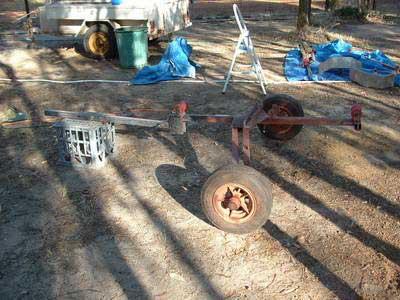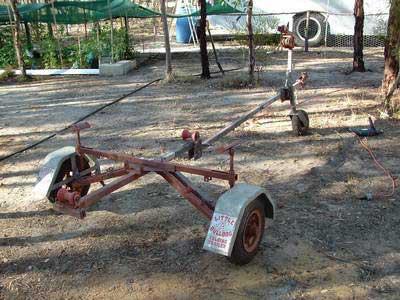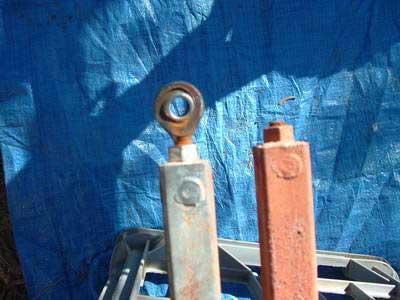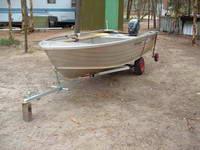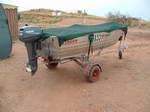|
|
|||
|
|
|
|
|
|
|
|||
FOLDING BOAT TRAILERS
|
|
|
|
|
|
WE NEED YOUR SUPPORT. |
|
|
|
|
LITTE BULLDOG 2005 MODEL
We have had experience with four folding boat trailers so far. The first one was a second hand pre 2005 Little Bulldog folding boat trailer. It was built with Australian steel in the West Australian factory. It was a good tough trailer and we used it for several years with the only problem being the failure of a supporting arm joint that can be seen in the photos below.
|
|||
|
|
|
|
|
|
|
|
|
|
|
LIGHTWEIGHT BOAT MOVER
One year we were up in the Pilbara and hadn't taken the Bulldog, opting instead to take a new 'experimental' light weight trailer. The new light weight trailer fell apart the
first time we attempted to use it and we were left with the choice of a long season with no boat fishing or getting another trailer shipped up from Perth to Karratha.
|
|||
|
|
|
|
|
|
LITTLE BULLDOG II
We 'bit the bullet' coughed up about $2000 and got a new Little Bulldog shipped up when the boat mover fell to bits.
We had been so impressed with the old trailer we didn't hesitate to go for the same brand again. This turned out to be a BIG mistake.
|
|||
|
|
|
|
|
|
LITTLE BULLDOG CARAVAN RACK
This is an optional extra (costing around $105) that allows you to carry the complete trailer on the rear bumper of your caravan. We have added two lugs to the back
of the caravan so that a ratchet strap (seen above) can tension the Bulldog trailer once it is mounted. This isn't something mentioned by the manufacturer but we feel
it adds a degree of security.
|
|||
|
|
|
|
|
|
MANGROVE JACK MARINE TRAILER
Eventually we just got fed up with the weight, difficulty and continual break-downs of the Bulldog II trailer and decided to look for something better.
The trailer was easy to transport and we had plenty of room to spare. The only mistake we made was forgetting to take a 50mm tow ball with us as the caravan, which is a Tregg
hitch, meant we had the wrong sort of hitch for the boat on the car. We only managed to remember this when we arrived at our destination. Fortunately a quick trip to the local
hardware store sorted this out.
|
|||
|
|
|
|
|
|
|
|||
|
Become a supporter of this website for just $5 a month
|







